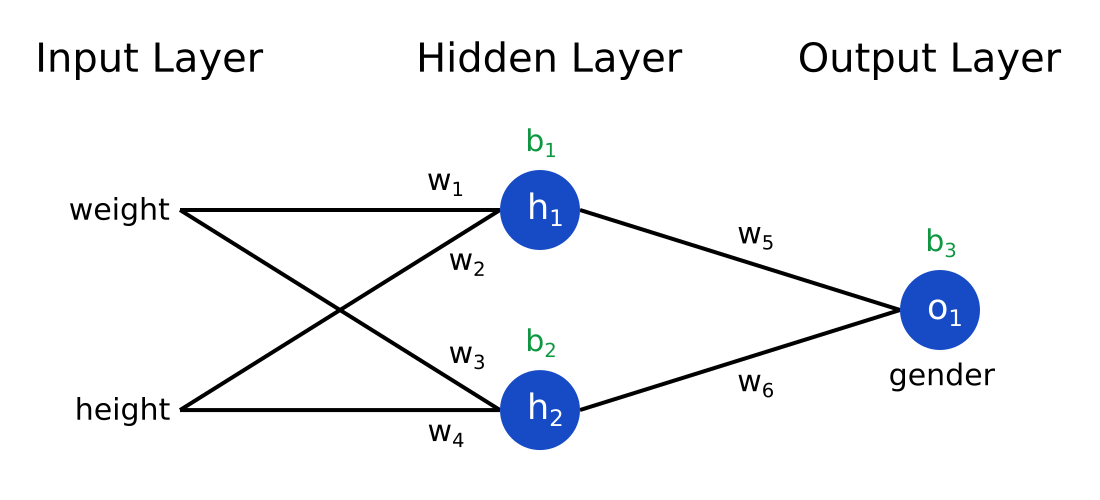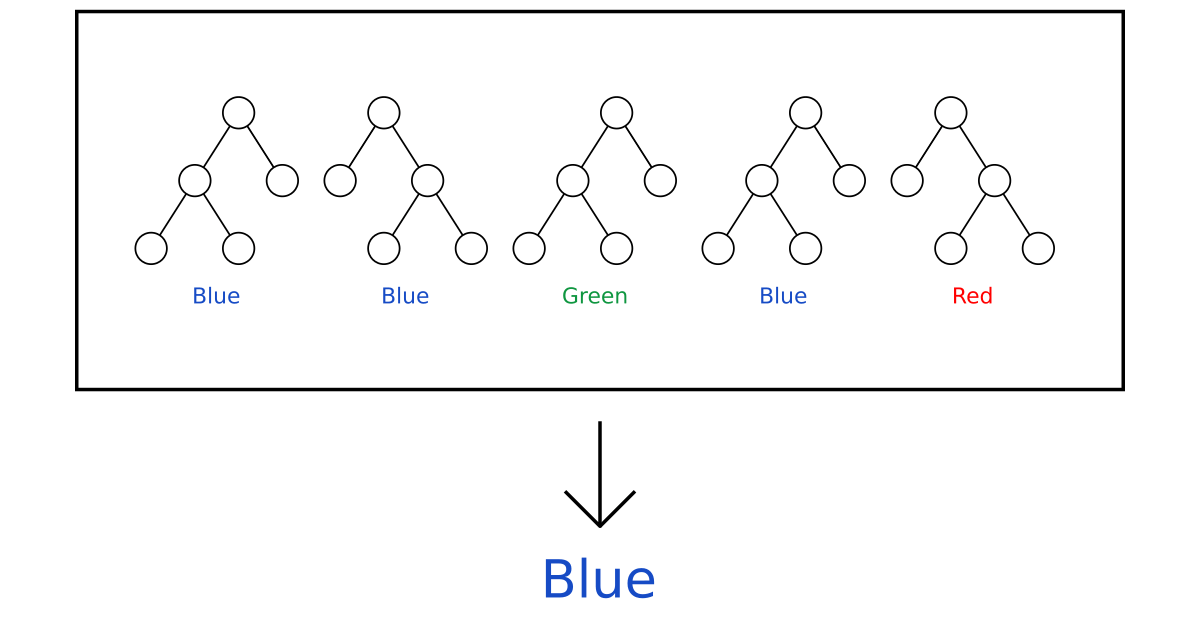A Simple Explanation of Gini Impurity
What Gini Impurity is (with examples) and how it's used to train Decision Trees.
If you look at the documentation for the DecisionTreeClassifier class in scikit-learn, you’ll see something like this for the criterion parameter:

The RandomForestClassifier documentation says the same thing. Both mention that the default criterion is “gini” for the Gini Impurity. What is that?!
TLDR: Read the Recap.
Decision Trees 🌲
Training a decision tree consists of iteratively splitting the current data into two branches. Say we had the following datapoints:
Right now, we have 1 branch with 5 blues and 5 greens.
Let’s make a split at :
This is a perfect split! It breaks our dataset perfectly into two branches:
- Left branch, with 5 blues.
- Right branch, with 5 greens.
What if we’d made a split at instead?
This imperfect split breaks our dataset into these branches:
- Left branch, with 4 blues.
- Right branch, with 1 blue and 5 greens.
It’s obvious that this split is worse, but how can we quantify that?
Being able to measure the quality of a split becomes even more important if we add a third class, reds . Imagine the following split:
- Branch 1, with 3 blues, 1 green, and 1 red.
- Branch 2, with 3 greens and 1 red.
Compare that against this split:
- Branch 1, with 3 blues, 1 green, and 2 reds.
- Branch 2, with 3 greens.
Which split is better? It’s no longer immediately obvious. We need a way to quantitatively evaluate how good a split is.
Gini Impurity
This is where the Gini Impurity metric comes in.
Suppose we
- Randomly pick a datapoint in our dataset, then
- Randomly classify it according to the class distribution in the dataset. For our dataset, we’d classify it as blue of the time and as green of the time, since we have 5 datapoints of each color.
What’s the probability we classify the datapoint incorrectly? The answer to that question is the Gini Impurity.
Example 1: The Whole Dataset
Let’s calculate the Gini Impurity of our entire dataset. If we randomly pick a datapoint, it’s either blue (50%) or green (50%).
Now, we randomly classify our datapoint according to the class distribution. Since we have 5 of each color, we classify it as blue 50% of the time and as green 50% of the time.
What’s the probability we classify our datapoint incorrectly?
| Event | Probability |
|---|---|
| Pick Blue, Classify Blue ✓ | 25% |
| Pick Blue, Classify Green ❌ | 25% |
| Pick Green, Classify Blue ❌ | 25% |
| Pick Green, Classify Green ✓ | 25% |
We only classify it incorrectly in 2 of the events above. Thus, our total probability is 25% + 25% = 50%, so the Gini Impurity is .
The Formula
If we have total classes and is the probability of picking a datapoint with class , then the Gini Impurity is calculated as
For the example above, we have and , so
which matches what we calculated!
Example 2: A Perfect Split
Let’s go back to the perfect split we had. What are the Gini Impurities of the two branches after the split?
Left Branch has only blues, so its Gini Impurity is
Right Branch has only greens, so its Gini Impurity is
Both branches have impurity! The perfect split turned a dataset with impurity into 2 branches with impurity.
A Gini Impurity of 0 is the lowest and best possible impurity. It can only be achieved when everything is the same class (e.g. only blues or only greens).
Example 3: An Imperfect Split
Finally, let’s return to our imperfect split.
Left Branch has only blues, so we know that .
Right Branch has 1 blue and 5 greens, so
Picking The Best Split
It’s finally time to answer the question we posed earlier: how can we quantitatively evaluate the quality of a split?
Here’s the imperfect split yet again:
We’ve already calculated the Gini Impurities for:
- Before the split (the entire dataset):
- Left Branch:
- Right Branch:
We’ll determine the quality of the split by weighting the impurity of each branch by how many elements it has. Since Left Branch has 4 elements and Right Branch has 6, we get:
Thus, the amount of impurity we’ve “removed” with this split is
I’ll call this value the Gini Gain. This is what’s used to pick the best split in a decision tree! Higher Gini Gain = Better Split. For example, it’s easy to verify that the Gini Gain of the perfect split on our dataset is .
Recap
Gini Impurity is the probability of incorrectly classifying a randomly chosen element in the dataset if it were randomly labeled according to the class distribution in the dataset. It’s calculated as
where is the number of classes and is the probability of randomly picking an element of class .
When training a decision tree, the best split is chosen by maximizing the Gini Gain, which is calculated by subtracting the weighted impurities of the branches from the original impurity.
Want to learn more? Check out my explanation of Information Gain, a similar metric to Gini Gain, or my guide Random Forests for Complete Beginners.


